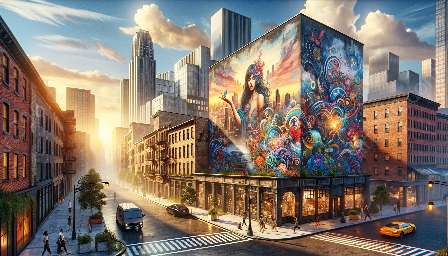Street art, often associated with graffiti and murals, has become an integral part of urban landscapes around the world. It plays a significant role in community engagement and urban revitalization by transforming public spaces and igniting conversations among residents and visitors alike. This form of art has the power to create a sense of place and identity, adding vibrancy to communities and contributing to the aesthetic appeal of urban environments.
The History of Street Art
Street art has a rich history dating back to the early 20th century, with roots in political activism, social commentary, and self-expression. Initially considered illegal and disruptive, street art has evolved into a recognized art form that encompasses a wide range of styles and techniques, from stencils and wheat-pasting to large-scale murals.
Cultural Reflection and Expression
One of the key roles of street art in community engagement is its ability to reflect and express the diverse cultures and identities present in urban areas. Street artists often draw inspiration from local heritage, traditions, and contemporary issues, creating visually compelling works that resonate with the community they inhabit. By incorporating cultural elements into their art, street artists contribute to a sense of inclusivity and representation within the urban landscape.
Creating Dialogue and Connection
Street art serves as a catalyst for dialogue and connection within communities. Murals and graffiti art often depict themes that resonate with local residents, sparking discussions and provoking thought on social, environmental, and political issues. Through their art, street artists engage with the public, inviting them to participate in the interpretation and discussion of the artwork, thus fostering a sense of shared experience and communal connection.
Revitalizing Urban Spaces
The presence of street art in urban environments has the potential to revitalize neglected or underutilized areas. By transforming blank walls, abandoned buildings, and vacant lots into vibrant showcases of creativity, street art contributes to the rejuvenation of urban neighborhoods. It attracts visitors, enhances walkability, and can even serve as a tool for economic development by attracting businesses and tourism to previously overlooked areas.
Empowerment and Social Change
Street art often aligns with grassroots movements and social activism, empowering local communities to express their voices and advocate for change. In addition to beautifying urban spaces, street art can be a platform for addressing social injustices, promoting environmental sustainability, and advocating for marginalized communities. This form of artistic expression has the potential to inspire and mobilize individuals, contributing to positive social transformation and community empowerment.
The Future of Urban Art
As cities continue to evolve, the role of street art in community engagement and urban revitalization is expected to grow. With increasing recognition from local governments and urban planners, street art is becoming integrated into urban development strategies and public art initiatives. As a result, the power of street art to enrich the cultural fabric of communities, foster inclusivity, and revitalize urban spaces is poised to continue making a lasting impact on cities around the world.

